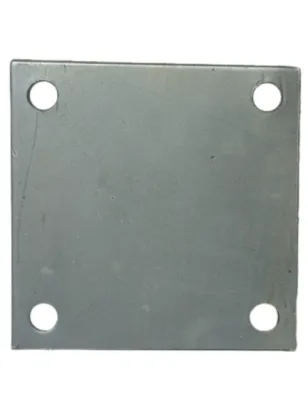loading...
- No. 9, Xingyuan South Street, Dongwaihuan Road, Zaoqiang County, Hengshui, Hebei, China
- admin@zjcomposites.com
- +86 15097380338
- Welcome to visit our website!
Mechanics and Design of Reinforced Concrete Using Fiber Reinforced Polymer Bars
The Mechanics and Design of Reinforced Concrete with FRP Bars
Reinforced concrete (RC) has long been the material of choice in construction due to its superior compressive strength combined with tensile reinforcement properties. Traditionally, steel bars have been used to enhance the tensile behavior of concrete, but advancements in materials science have introduced Fiber Reinforced Polymer (FRP) bars as a promising alternative. This article explores the mechanics and design considerations of reinforced concrete with FRP bars, shedding light on the advantages, unique properties, and implications for modern engineering.
Understanding FRP Bars
FRP bars are composite materials composed of fibers, typically glass, carbon, or aramid, embedded in a polymer matrix. These bars are known for their lightweight, high strength-to-weight ratio, corrosion resistance, and non-magnetic properties, which make them particularly suitable for specific applications where traditional steel reinforcement might be less effective.
One of the most significant benefits of FRP bars is their resistance to corrosion. Unlike steel, which deteriorates when exposed to moisture and salt, FRP bars can withstand harsh environmental conditions, making them ideal for structures in marine or exposed atmospheres. This property not only extends the lifespan of a structure but also reduces maintenance costs.
Mechanical Properties
The mechanical behavior of concrete reinforced with FRP bars differs significantly from that of traditional reinforced concrete. The tensile strength of FRP bars varies depending on the type of fiber used; for example, carbon FRP (CFRP) exhibits high tensile strength and stiffness, while glass FRP (GFRP) provides a more economical solution with adequate mechanical properties for many applications.
When designing concrete structures with FRP reinforcement, engineers must account for the different stress-strain characteristics of FRP compared to steel. The elastic modulus of FRP bars is generally lower than that of steel, leading to different deformation patterns under load. This characteristic requires careful consideration in design to ensure that serviceability requirements are met, particularly in terms of deflection.
Design Guidelines
reinforced concrete with frp bars mechanics and design

Designing reinforced concrete structures with FRP bars involves unique considerations in accordance with building codes and standards
. The American Concrete Institute (ACI) and other international organizations have developed guidelines that address the use of FRP reinforcement. Key aspects include1. Load Capacity Analysis The ultimate load capacity of FRP-reinforced concrete elements must be calculated using appropriate strength reduction factors. The behavior under service loads should also be assessed, especially regarding crack control and deflection.
2. Bonding and Anchorage Establishing effective bond strengths between FRP bars and concrete is critical for the performance of the composite system. Engineers must evaluate the anchorage conditions to prevent premature failure modes like pull-out.
3. Durability Considerations While FRP bars are generally resistant to environmental degradation, considerations on long-term performance under various environmental conditions should be integrated into the design. This includes assessing exposure conditions and potential chemical interactions.
4. Design for Serviceability Deflections and crack widths must be controlled within acceptable limits. Engineers should design reinforcement ratios and configurations that meet both strength and serviceability checks.
5. Behavior Under Extreme Conditions Evaluating the performance of FRP-reinforced concrete structures under extreme conditions—such as seismic loads or fire—is essential. Research in this area continues to evolve, but understanding how FRP behaves under such conditions is pivotal for safety.
Conclusion
The integration of FRP bars in reinforced concrete brings innovative opportunities to modern construction practices. While offering advantages such as corrosion resistance and reduced weight, the design of structures incorporating FRP requires a comprehensive understanding of their mechanical properties and how they interact with concrete. As research in this field progresses, and as building codes adapt to include these new materials, engineers will increasingly leverage FRP reinforcement to create durable, resilient, and cost-effective structures that withstand the test of time and environmental challenges. The ongoing development and refinement of design methodologies will only enhance the application of FRP in reinforced concrete, paving the way for more advanced construction techniques in the future.
-
The Rise of FRP Profiles: Strong, Lightweight, and Built to LastNewsJul.14,2025
-
SMC Panel Tanks: A Modern Water Storage Solution for All EnvironmentsNewsJul.14,2025
-
GRP Grating: A Modern Solution for Safe and Durable Access SystemsNewsJul.14,2025
-
Galvanized Steel Water Tanks: Durable, Reliable, and Ready for UseNewsJul.14,2025
-
FRP Mini Mesh Grating: The Safer, Smarter Flooring SolutionNewsJul.14,2025
-
Exploring FRP Vessels: Durable Solutions for Modern Fluid HandlingNewsJul.14,2025
-
GRP Structures: The Future of Lightweight, High-Performance EngineeringNewsJun.20,2025
